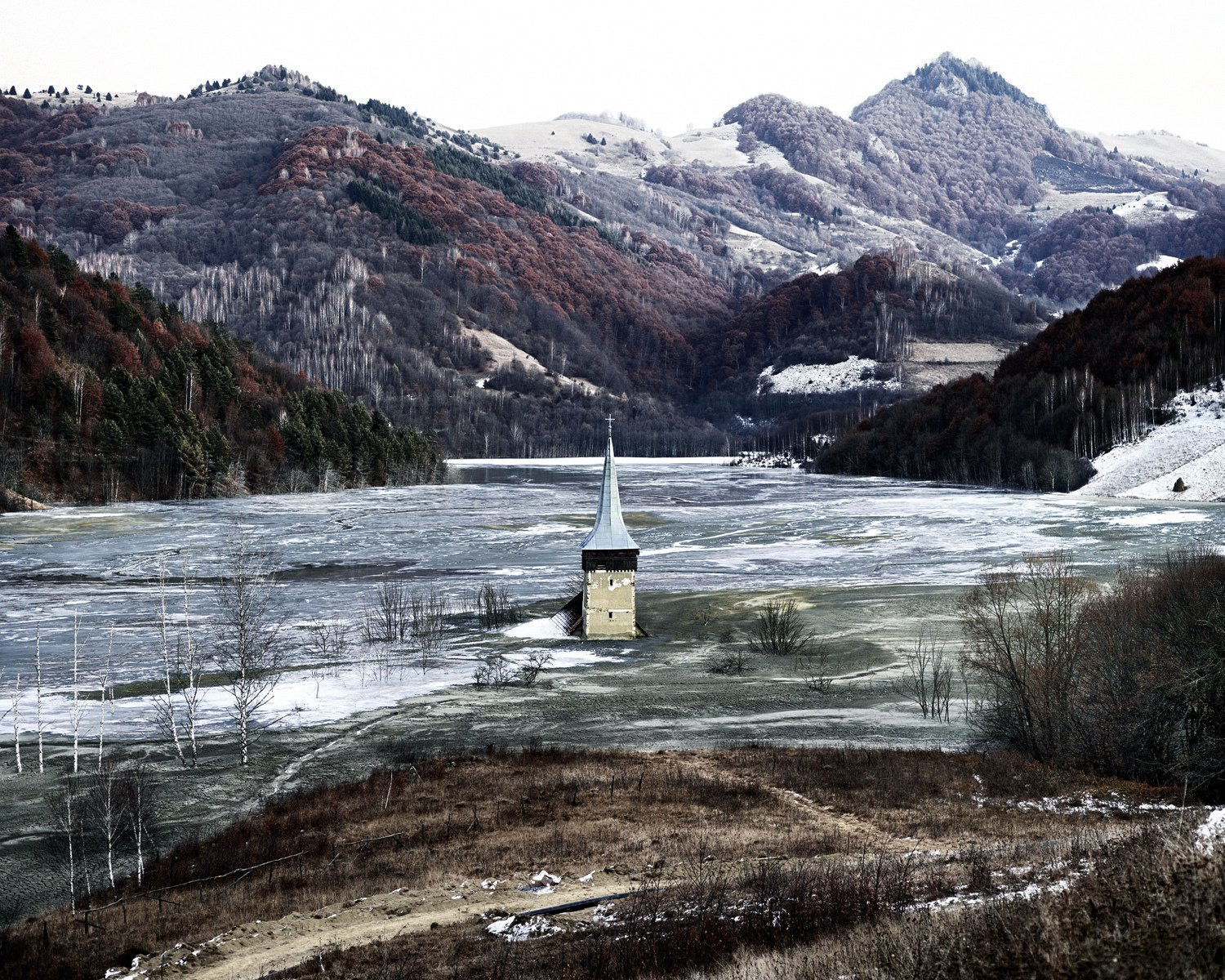Tamás Dezső’s provocative images of Romania
A few years ago, Hungarian photographer Tamás Dezső was tipped off to a small, picturesque mining village in central Romania. “The Flooded Village of Geamana,” part of Dezső’s “Epilogue” on view at the Robert Koch Gallery in San Fracisco through Nov. 2, shows rolling mountains and a church steeple spearing through frozen lake. The lake is noxious sludge from a mining disaster that engulfed Geamana and turned it into a ghost town. The affair was covered up.
“A friend who lives in Romania called my attention to the site, which is not so well known there either,” Dezső says. “The village that was flooded with toxic substance because of enforced industrial production symbolizes the nature of dictatorship.”
After years photographing Romania on photojournalism assignments, Dezső returned to the country for his own material.
“The country, the untouched areas, the immediately open and sincere people and a way of life close to nature fascinated me,” Dezső says. “I wanted to render the transition period … the time since 1989 which followed Ceausescu’s dictatorial communist regime, after the revolution and his execution. This period, which is still ongoing, can be characterized by a process of awkward democratization that for the time being is burdened with the unprocessed past.”
Dezső’s images are snowy, desolate and arresting shots of abandoned factories, mines, rural people and locales. While frank and factual, they also hum with tenderness and respect, revealing a country untouched by fast-paced modernity. In “Metal Scrap Collector,” a man stands perilously between craggy concrete staircases in the cross section of a building that looks like it was bombed in the Blitz. Nature is a recurrent theme: birds of prey circling a snow-covered dump, grass reclaiming factories, flocks of sheep, and the lush setting of the daunting Decebal statue.
A charming, evocative image presents itself in “Ciprian, the Bear Dancer.” The grave visage of a young boy looks out from an imposing bear suit, complete with head and teeth. He is the youngest in a family of bear dancers, people who dance in bearskins during a millennia-old rural Romanian custom to ward off evil.
In years of photographing Romania, which has historical parallels to Hungary, Dezső has been surprised by the romanticism that surrounds Romania’s communist past.
“Following the several decades-long dictatorship, with its terrible deprivation, starvation and mental terror, memories have grown beautiful in a short time,” says Dezso. “Because of the uncertainty of the transition period since 1989 and the disappearance of the former bad, yet secure, guiding points, a false attitude to the near past that makes the horrors look attractive has been formed in a large part of the society.”
Source: sfexaminer.com, Courtesy Photo
please make a donation here
Hot news
Top Hungary news: Slovenia-Hungary border controls, new Wizz flight to Italy, Austrian ambulances in Hungary, murder case — 11 December, 2024
FM Szijjártó: Hungary and Russia are committed to maintaining energy cooperation
Austrian ambulances could soon assist Hungarian patients for faster emergency response
After Putin, Orbán is to meet Erdoğan for talks
24-year-old murder solved: Identity of little Hungarian boy Tamás Till’s killer revealed
Budapest International Documentary Film Festival returns: 60 stories of everyday heroes





